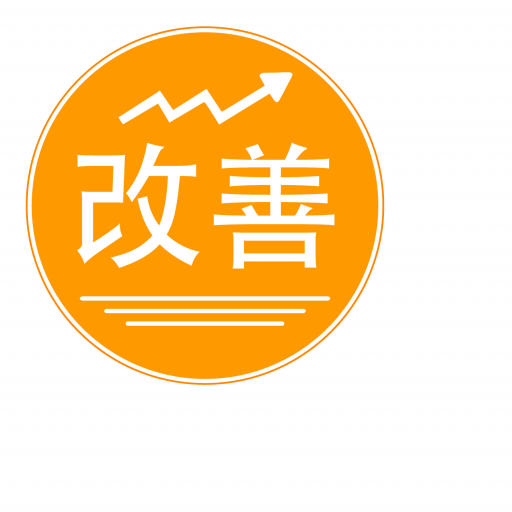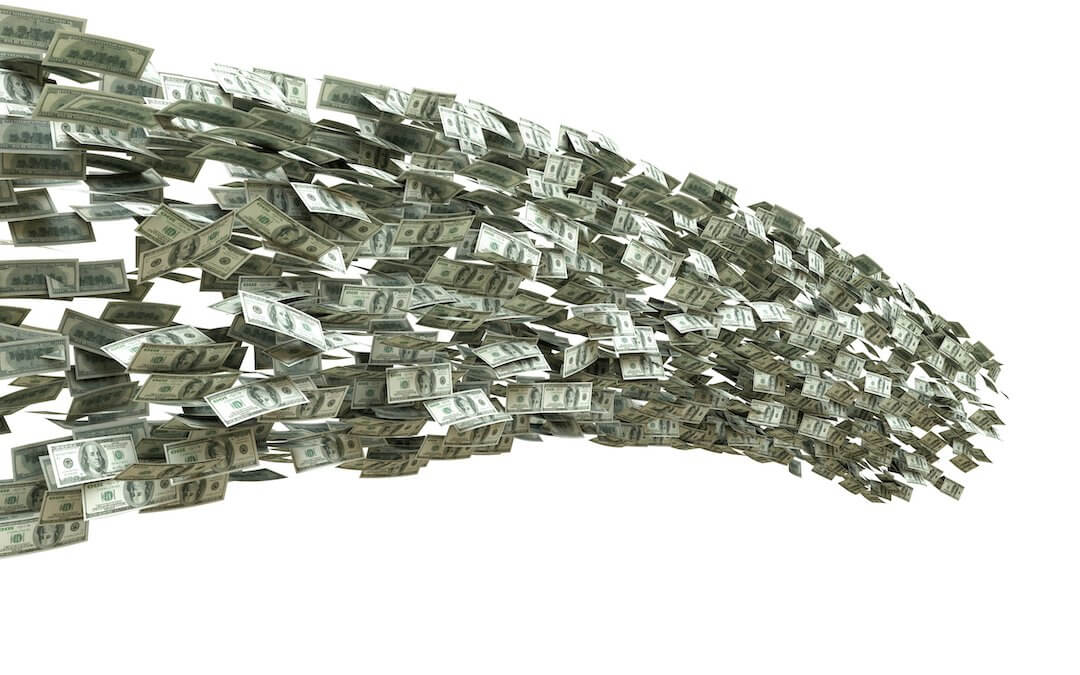Many companies struggle with understanding their Cash Conversion Cycle and how it impacts their growth. The Cash Conversion Cycle is the time taken from when you first engage with a potential client to being paid for the work you do or the product you deliver. Companies need cash to fund growth, and profit is not the same as cash flow. A longer Cash Conversion Cycle requires more cash for growth and external sources, which may not always be available at economically viable rates.
Components of the Cash Conversion Cycle
The Cash Conversion Cycle can be broken down into four components: Sales Cycle, Make/Production & Inventory Cycle, Delivery Cycle, and Billing and Payments Cycle. Each component varies in duration for different companies and industries. For example, Company X might have a 120-day Cash Conversion Cycle comprising 40 days for Sales, 30 days for Make/Production and Inventory, 5 days for Delivery, and 45 days for Billing and Payments. The challenge is to reduce the length of the cycle.
Three Ways to Improve the Cash Conversion Cycle
- Eliminate Mistakes: The easiest way to improve your Cash Conversion Cycle is by identifying and rectifying mistakes that lead to delays in each component of the cycle. Work with your team to pinpoint the most significant errors and implement a program to reduce them. Measure your cycles and errors to minimize delays in your Cash Conversion Cycle.
- Shorten Cycle Times: Investigate cycle times and underlying processes for improvement opportunities. This step is slightly more complex, as it requires reevaluating your existing processes and asking deeper questions. Tom Wujec’s “How to Make Toast” exercise can help visualize the process, break it down into manageable steps, and identify areas of improvement. See below.
- Improve Business Model: The final method to enhance your Cash Conversion Cycle involves refining your business model. Look for ways to optimize each component of the cycle by eliminating inefficiencies and streamlining processes.
Understanding and optimizing your Cash Conversion Cycle is crucial for business growth. By focusing on eliminating mistakes, shortening cycle times, and improving your business model, you can reduce the time it takes to convert your efforts into cash and, ultimately, fuel your company’s growth.
Asking the Right Questions: Challenging the Status Quo
Another way to improve cycle times is by questioning the existing method and exploring alternative approaches. This process can be challenging due to built-in biases but can lead to significant improvements with the help of a skilled facilitator.
Using the 5 Whys Technique
The 5 Whys technique is powerful in identifying the root cause of problems, understanding process relationships, and eliminating assumptions or biases. This method is highly effective without the need for complicated evaluation techniques.
Improving the Business Model: A Challenging but Rewarding Approach
The most challenging but potentially most rewarding method to improve the Cash Conversion Cycle is reevaluating and adjusting your business model. A famous example of this approach is Dell Computers, which dramatically improved its cycle by adopting a build-to-order model. This section will further explain how Dell achieved a reduction in its Cash Conversion Cycle through strategic changes in its business model.
Dell’s Transformation: The Build-to-Order Model
Dell Computers decided to manufacture computers only when customers placed orders. Doing so shifted their business model from a traditional inventory-based approach to a customer-centric, build-to-order model. This change led to significant improvements in each component of their Cash Conversion Cycle, as outlined below:
-
Sales Cycle: As customers customized their computers during the ordering process, Dell was able to streamline its sales cycle. The company no longer needed to carry a wide range of pre-built computers, enabling them to better target their marketing and sales efforts.
-
Make/Production & Inventory Cycle: Dell’s build-to-order model significantly reduced the need for finished inventory. They only had to maintain a minimal level of inventory for components required for custom orders. This approach also reduced the risk of obsolete inventory, as Dell only purchased components in response to specific orders.
-
Delivery Cycle: By having customers pay for their computers when placing orders, the delivery cycle’s impact on the Cash Conversion Cycle became less significant. Dell could focus on efficient production and timely delivery without worrying about the cash tied up in finished goods.
-
Billing and Payments Cycle: With customers paying upfront for their orders, Dell eliminated the need for a lengthy billing and payments cycle. The company received cash from sales before starting production, freeing up working capital and reducing the time it took to collect payment.
The Result: A Negative Cash Conversion Cycle
As a result of these strategic changes in their business model, Dell reduced its Cash Conversion Cycle from 63 days to an impressive -39 days. This negative cycle meant that Dell effectively used its customers’ cash to fund its growth, eliminating the need for external financing and improving overall cash flow.
Dell’s success story exemplifies the potential benefits of rethinking your business model to improve the Cash Conversion Cycle. By identifying areas of inefficiency in your current model and exploring innovative alternatives, you can significantly reduce your reliance on external financing sources and drive sustainable growth.
However, it’s essential to keep in mind that the right approach for your business may differ from that of Dell or others. The key is to analyze your unique situation, understand the challenges specific to your industry, and find innovative solutions that best align with your company’s goals and resources.
Are You Optimizing Your Cash Conversion Cycle?
Understanding and optimizing your Cash Conversion Cycle can reduce your reliance on bank lines of credit and other debt sources. If you need help determining your cycle and shortening it, consider reaching out to a professional for guidance.
Copyright (c) 2021, Marc A Borrelli
Recent Posts
The Downfall of Boeing: A Lesson in Core Values
Boeing’s 737 Max issues highlighted the company’s sacrifice of safety for financial performance, resulting in a tarnished reputation. The prioritization of profit over core values also damaged the FAA’s credibility and revealed a lack of accountability for top executives. This downfall serves as a reminder of the importance of maintaining core values and prioritizing them over short-term financial gains.
Resolutions, Here We Go Again.
In reflecting on 2021 resolutions, the author scored themselves in three categories and sought to improve success in 2022 by addressing friction points. Drawing on advice from social psychologist Wendy Wood, the author identified areas to reduce or increase friction in their failed resolutions. By making these adjustments, the author aims to enhance their goal achievement and encourages others to consider friction when setting resolutions.
You need to take an extended vacation. No, seriously, you do.
COVID has taken a toll on all of us. If you have not taken an extended vacation in a while where you disconnect, you need to now. You and your business will benefit.
Becoming Famous in Your Niche: The Success Story of Linn Products Limited
In a previous discussion, I highlighted the importance of being famous for something. Being well-known in your niche can help you: Concentrate on your strengths Connect with your target audience Communicate your offerings more effectively Receive referrals Identify...
Discovering Your Niche: Why You Need to Be Famous for Something
As an entrepreneur, it’s crucial to specialize in a specific area and become famous for something, allowing you to generate referrals and build your brand. Understanding the “job” you’re hired for helps you stand out in the marketplace and communicate your value proposition effectively. By providing value to your clients, you can adopt a value-based pricing approach, ensuring your business remains competitive and maintains a strong market presence.
Rethinking Your Pricing Model: Maximizing Margins and Providing Value
Rethink your pricing model by focusing on the value you provide and your customers’ Best Alternative To a Negotiated Agreement (BATNA). This approach can help you maximize margins while delivering better value to your clients. Assess your offerings and brainstorm with your team to identify pricing adjustment opportunities or eliminate commodity products or services.
Do you know your Profit per X to drive dramatic growth?
I recently facilitated a workshop with several CEOs where we worked on the dramatic business growth model components. One of the questions that I had asked them beforehand was, "What is Your Profit/X?" The results showed that there this concept is not clear to many....
The War for Talent: 5 Ways to Attract the Best Employees
In today’s War for Talent, attracting the best employees requires a focus on value creation, core customer, brand promise, and value delivery. Clearly articulate your company’s mission, identify your “core employee” based on shared values, and offer more than just a salary to stand out as an employer. Utilize employee satisfaction metrics and showcase your company’s commitment to its workforce on your website to make a strong impression on potential candidates.
Are you killing your firm’s WFH productivity?
Productivity remained during WFH with COVID. However, further analysis found that hourly productivity fell and was compensated for by employees working more hours. What was the culprit – Meetings. Want to increase productivity, have fewer meetings.
EOS is just that, an Operating System
The EOS Model® provides a useful foundation for businesses, but it falls short in addressing key aspects of creating an growth. By incorporating additional elements from the Gravitas 7 Attributes of Agile Growth® model, businesses can create a more comprehensive system that promotes growth while maintaining smooth operations. Focusing on Leadership, Strategy, Execution, Customer, Profit, Systems, and Talent, the 7 Attributes of Agile Growth® offer a more encompassing approach to achieving success.












[url=https://ozempic.us.com/]ozempic for weight loss[/url]
[url=http://rybelsus.download/]wegovy online prescription[/url]
[url=http://rybelsustabs.shop/]wegovy 14mg tablets[/url]
[url=https://rybelsussemaglutide.online/]buy wegovy from canada[/url]
dota2answers.com
Zhou Tanzhi는 파란색에서 온 볼트 같았고 그의 얼굴은 순식간에 창백해졌습니다.
wow, amazing
[url=https://wegovy.directory/]semaglutide 14[/url]
wow, amazing
[url=https://semaglutide.click/]rybelsus for diabetes[/url]
[url=http://rybelsus.us.com/]wegovy weight loss[/url]
[url=http://rybelsus.best/]rybelsus order[/url]
Everyone loves it when individuals come together and share opinions.
Great website, keep it up!
[url=http://rybelsussemaglutide.com/]rybelsus buy australia[/url]
[url=http://semaglutiderybelsus.com/]buy ozempic online cheap[/url]
[url=https://rybelsus.quest/]wegovy for sale[/url]
This post will help the internet people for creating new weblog or even a blog from start to
end.
[url=https://wegovy.click/]rybelsus buy australia[/url]
[url=https://semaglutide.download/]buy semaglutide online from india[/url]
[url=http://rybelsussemaglutide.online/]wegovy semaglutide tablets 3mg[/url]
pragmatic-ko.com
Fang Jifan의 얼굴도 심각해졌으며 “이 배에 망원경이 있습니까? “라고 외쳤습니다.
💫 Wow, this blog is like a cosmic journey launching into the galaxy of endless possibilities! 🌌 The captivating content here is a rollercoaster ride for the mind, sparking excitement at every turn. 💫 Whether it’s technology, this blog is a source of inspiring insights! #AdventureAwaits Embark into this cosmic journey of imagination and let your thoughts roam! ✨ Don’t just enjoy, experience the excitement! #BeyondTheOrdinary Your mind will be grateful for this exciting journey through the worlds of awe! ✨
[url=https://wegovy.best/]semaglutide[/url]
smcasino-game.com
배는 마침내 모든 사람의 시야를 떠났고 바다와 하늘 사이의 선에는 흔적이 없었습니다.
[url=https://semaglutiderybelsus.online/]wegovy best price[/url]
What’s up, yeah this paragraph is actually pleasant and I have learned lot of things from it on the topic of blogging. thanks.
how to buy bitcoin on etoro
[url=http://rybelsus.pics/]rybelsus semaglutide tablets[/url]
[url=http://rybelsussemaglutide.com/]wegovy medicine[/url]
[url=http://semaglutide.best/]where to buy semaglutide[/url]
I used to be able to find good info from your blog posts.
[url=https://rybelsus.company/]semaglutide for diabetes[/url]
[url=http://wegovy.best/]buy ozempic for weight loss[/url]
[url=https://semaglutiderybelsus.online/]semaglutide best price[/url]
[url=https://rybelsustabs.com/]rybelsus semaglutide tablets 3mg[/url]
[url=http://semaglutide.best/]semaglutide for weight loss[/url]
[url=http://ozempictabs.com/]semaglutide canada pharmacy prices[/url]
It’s very interesting! If you need help, look here: hitman agency
[url=https://semaglutide.trade/]rybelsus 7mg[/url]
lfchungary.com
그들은 모두 탕자요, 쓰레기요, 쓰레기요, 인류의 공공의 적입니다.
[url=https://ozempic.quest/]semaglutide wegovy[/url]
Outstanding, kudos
[url=https://semaglutide.party/]buy semaglutide[/url]
[url=http://semaglutide.download/]semaglutide tablets buy[/url]
[url=https://ozempic.best/]buy ozempic[/url]
sm-online-game.com
Qi Jingtong은 빨간 눈으로 Tang Yin을 바라 보았습니다. “이 전쟁 법에 따르면 군인을 훈련시켜야합니까?”
Wow, marvelous blog format! How long have you ever been blogging for?
you make running a blog glance easy. The overall
glance of your website is excellent, let alone
the content! You can see similar: e-commerce and here sklep online
strelkaproject.com
그의 마음 속에서 그는 여전히 걱정하고 무언가를 두려워했습니다.
[url=http://semaglutide.party/]wegovy 3 mg[/url]
[url=http://ozempic.us.com/]order wegovy[/url]
Lovely, very cool
Attractive section of content. I just stumbled upon your web site and
in accession capital to assert that I acquire
actually enjoyed account your blog posts. Any way I will be subscribing
to your augment and even I achievement you access consistently quickly.
[url=http://rybelsus.best/]wegovy tablets cost[/url]
1SS3D249742
lfchungary.com
누군가를 죽이는 것과 학살당하는 것은 분명 또 다른 일입니다.
I don’t even know how I ended up here, however I assumed this post was good.
I do not understand who you might be however certainly you’re going to a famous blogger for those who aren’t already.
Cheers!
blibli
cululutata
Apart from our three founders, our team is a diverse blend of tech enthusiasts, blockchain experts,
and visionary creatives. Together, we are passionately dedicated to driving innovation in the digital
realm. Our collaborative efforts propel us forward, navigating the complex landscape of Web3
technology
to deliver groundbreaking solutions for the future.
[url=https://rybelsustabs.shop/]buy ozempic pill form for adults[/url]
[url=https://ozempic.us.org/]wegovy from canada[/url]
linetogel
[url=https://ozempic.guru/]wegovy canada[/url]
Wow, you’ve done an outstanding job this time! Your effort and creativity are truly commendable of this content. I just had to take a moment to express my gratitude for producing such incredible content with us. You are exceptionally talented and dedicated. Keep up the awesome work! 🌟👏👍
pragmatic-ko.com
그는 속으로 생각하지 않을 수 없었습니다. 빽빽하게 심어진 감자가 무당 얼마나 생산할 수 있을까?
[url=https://rybelsustabs.shop/]order rybelsus online[/url]
child porn
[url=https://rybelsus.company/]semaglutide 21 mg[/url]
Absolutely fantastic, you’ve done an outstanding job this time! Your effort and creativity are truly commendable of this piece. I felt compelled to express my thanks for creating such outstanding work with us. Your dedication and talent are truly remarkable. Keep up the awesome work! 🌟👏👍
nice content!nice history!! boba 😀
🌌 Wow, this blog is like a cosmic journey
[url=https://wegovy.trade/]semaglutide for diabetes[/url]
This is amazing, you’ve done an outstanding job this time! Your dedication and creativity are truly admirable of this work. I just had to take a moment to express my gratitude for producing such incredible work with us. You are incredibly talented and dedicated. Keep up the amazing work! 🌟👏👍
kids porn
blibli
Wow, you’ve knocked it out of the park this time! Your dedication and effort are evident in every detail of this work. I felt compelled to express my thanks for bringing such incredible work with us. You have an incredible talent and dedication. Keep up the outstanding work! 🌟👏👍
I know this if off topic but I’m looking into starting my own blog and was curious
what all is needed to get set up? I’m assuming having a blog like yours would cost a pretty penny?
I’m not very web smart so I’m not 100% positive. Any tips
or advice would be greatly appreciated. Cheers I saw similar here: sklep
online and also here: najlepszy sklep
[url=https://wegovy.click/]wegovy pill form[/url]
Oh my goodness, you’ve done an exceptional job this time! Your dedication and effort are evident in every detail of this work. I simply had to thank you for producing such outstanding content with us. You have an incredible talent and dedication. Keep up the excellent work! 🌟👏👍
wow, amazing
wow, amazing
🚀 Wow, this blog is like a cosmic journey
[url=https://semaglutide.party/]semaglutide over the counter[/url]
pragmatic-ko.com
톈진위시의 선박사절 양정(楊景)이 친히 인솔하여 톈진위로 도착한 선단을 환영하였다.
[url=http://rybelsustabs.com/]order rybelsus[/url]
Awesome work
sm-slot.com
허리를 자르는 것과 같다고 생각했는데 찰칵 소리와 함께 나왔다.
This is amazing, you’ve done an incredible job this time! Your dedication and creativity are truly admirable of this content. I felt compelled to express my thanks for producing such amazing content with us. Your talent and dedication are truly exceptional. Keep up the excellent work! 🌟👏👍
[url=https://semaglutide.monster/]semaglutide canada[/url]
Great job
Great job
[url=https://wegovy.guru/]buy rybelsus online no script needed[/url]
[url=http://semaglutide.best/]semaglutide tablets buy[/url]
boba 😀
Wow, you’ve done an outstanding job this time! Your effort and creativity are truly commendable of this work. I felt compelled to express my thanks for bringing such fantastic content with us. You are incredibly talented and dedicated. Keep up the excellent work! 🌟👏👍
[url=https://ozempic.company/]wegovy 7mg[/url]
Incredible, you’ve knocked it out of the park this time! Your commitment to excellence is evident in every aspect of this work. I couldn’t resist expressing my gratitude for creating such awesome content with us. You are exceptionally talented and dedicated. Keep up the fantastic work! 🌟👏👍
Cave ne cadas — Берегись, чтоб не упасть.
Outstanding, kudos
Hello! Quick question that’s entirely off topic. Do you know how to make your site mobile friendly?
My website looks weird when viewing from my iphone 4.
I’m trying to find a template or plugin that might be
able to resolve this issue. If you have any suggestions, please share.
Appreciate it!
pragmatic-ko.com
“…” Zhang Mao는 갑자기 서기관의 말이 가시적이라고 느꼈습니다.
Impressive, congrats
Incredible, you’ve done an exceptional job this time! Your effort and creativity are truly commendable of this work. I simply had to thank you for creating such amazing work with us. You are exceptionally talented and dedicated. Keep up the excellent work! 🌟👏👍
I simply could not go away your web site prior to suggesting that I actually enjoyed the standard info a person supply to your guests? Is going to be again ceaselessly to investigate cross-check new posts.
Remarkable, excellent
[url=https://semaglutide.guru/]semaglutide online[/url]
Enjoyed examining this, very good stuff, thanks. “All of our dreams can come true — if we have the courage to pursue them.” by Walt Disney.
I do trust all of the ideas you have presented for your post. They are really convincing and will certainly work. Still, the posts are very brief for newbies. Could you please lengthen them a bit from subsequent time? Thank you for the post.
Oh my goodness, you’ve truly surpassed expectations this time! Your hard work and creativity are truly inspiring of this work. I just had to take a moment to express my gratitude for bringing such fantastic work with us. You are incredibly talented and dedicated. Keep up the outstanding work! 🌟👏👍
Superb, congratulations
[url=https://semaglutide.directory/]semaglutide canada[/url]
l-inkproject.com
과거에 마차는 물건을 덜 싣고 시간과 노동력이 많이 소요되었습니다.
[url=http://semaglutidewegovy.com/]buy semaglutide online[/url]
[url=http://wegovy.guru/]semaglutide coupon[/url]
[url=https://wegovy.directory/]wegovy tablets for weight loss[/url]
Excellent effort
124969D742
palabraptu
Lovely, very cool
[url=https://predniso.online/]buy prednisone 1 mg mexico[/url]
linetogel
Absolutely fantastic, you’ve done an incredible job this time! Your commitment to excellence is evident in every aspect of this piece. I couldn’t resist expressing my gratitude for producing such fantastic work with us. Your dedication and talent are truly remarkable. Keep up the fantastic work! 🌟👏👍
[url=https://bestprednisone.online/]where can i buy prednisone without prescription[/url]
linetogel
[url=http://lisinoprilos.online/]lisinopril 60 mg tablet[/url]
[url=https://bestmedsx.online/]cost less pharmacy[/url]
[url=https://metformindi.com/]metformin where to get[/url]
palabraptu
Stellar, keep it up
Pretty component to content. I just stumbled upon your web site and in accession capital to say that I acquire actually enjoyed account
your weblog posts. Any way I will be subscribing in your
augment or even I success you get right of entry to consistently fast.
[url=https://tadalafilstd.online/]tadalafil 12mg capsules[/url]
[url=https://happyfamilystorerx.online/]happy family online shop[/url]
[url=http://olisinopril.online/]lisinopril 20 mg online[/url]
hihouse420.com
Xiong Er은 “결혼 할 여유가없고 신부 가격이 너무 무겁습니다. “라고 고통스러운 표정을지었습니다.
palabraptu
[url=https://bestmetformin.online/]metformin canada[/url]
[url=http://prednisoneo.online/]prednisone 10mg online[/url]
We are a group of volunteers and opening a new scheme in our community. Your site offered us with valuable information to work on. You have done a formidable job and our entire community will be thankful to you.
[url=https://bmtadalafil.online/]cheap tadalafil 20 mg canada[/url]
Hey, you used to write wonderful, but the last few posts have been kinda boringK I miss your super writings. Past several posts are just a little bit out of track! come on!
[url=https://metforemin.online/]metformin canada over the counter[/url]
[url=http://bestprednisone.online/]prednisone 20[/url]
Remarkable, excellent
Impressive, congrats
Pretty portion of content. I simply stumbled upon your website and in accession capital to assert that I
get in fact enjoyed account your weblog posts. Anyway I will
be subscribing to your augment and even I fulfillment you get right of entry to persistently quickly.
[url=http://synthroidotp.online/]synthroid 112 mcg in india[/url]
Magnificent, wonderful.
blublu
[url=https://valtrexid.com/]cost of valtrex[/url]
[url=http://metformindi.online/]buy metformin online pharmacy[/url]
You should take part in a contest for one of the most useful blogs on the net.
I most certainly will highly recommend this blog!
[url=https://metforminbi.online/]metformin purchase canada[/url]
Absolutely fantastic, you’ve really outdone yourself this time! Your dedication and effort are evident in every detail of this piece. I felt compelled to express my thanks for sharing such amazing content with us. Your dedication and talent are truly remarkable. Keep up the awesome work! 🌟👏👍
[url=http://oprednisone.online/]how to get prednisone tablets[/url]
Incredible, you’ve truly surpassed expectations this time! Your hard work and creativity are truly inspiring of this content. I felt compelled to express my thanks for creating such amazing work with us. Your talent and dedication are truly exceptional. Keep up the incredible work! 🌟👏👍
Amazing, nice one
[url=https://tadalafilstd.com/]best tadalafil generic[/url]
[url=http://synthroidam.online/]synthroid mexico pharmacy[/url]
[url=http://lisinoprilgp.com/]otc lisinopril[/url]
nice content!nice history!! boba 😀
Splendid, excellent work
[url=https://bestmedsx.online/]save on pharmacy[/url]
[url=https://asynthroid.com/]synthroid 137 mcg tab[/url]
blibliblu
[url=http://synthroidx.com/]buy synthroid 112 mcg[/url]
Incredible, you’ve done an exceptional job this time! Your hard work and creativity are truly inspiring of this content. I couldn’t help but express my appreciation for producing such incredible work with us. You have an incredible talent and dedication. Keep up the outstanding work! 🌟👏👍
Incredible, you’ve done an outstanding job this time! Your hard work and creativity are truly inspiring of this work. I couldn’t help but express my appreciation for producing such amazing work with us. Your talent and dedication are truly admirable. Keep up the awesome work! 🌟👏👍
Incredible, well done
Awesome work
[url=http://tadalafilgf.com/]buy cialis online safely[/url]
Incredible, you’ve done an outstanding job this time! Your dedication and effort are evident in every detail of this content. I simply had to thank you for producing such awesome content with us. Your talent and dedication are truly admirable. Keep up the outstanding work! 🌟👏👍
blublu
twichclip.com
대부분 장 여왕은 두 형제가 자신의 비밀 명령에 따라 행동했다고 생각할 것입니다.타인과 얼마나 많은 상품을 흥정했는데 배송이 안될 경우 어떻게 해야 하나요?
nice content!nice history!! boba 😀
Magnificent, wonderful.
mega-casino77.com
앞으로 어떡해, 편식쟁이가 되기 시작한 것 같다.
child porn
[url=http://synthroidx.online/]synthroid 75 mcg tablet price[/url]
child porn
I was recommended this blog by means of my cousin. I’m now not certain whether
this put up is written by him as no one else recognize such
detailed approximately my difficulty. You are amazing!
Thank you!
andrejpos.com
이것은 단순히 참을 수 있고 참을 수 없으며 사람들의 일자리를 부수고 있습니다.
Excellent effort
Incredible, you’ve done an incredible job this time! Your dedication and creativity are truly admirable of this content. I couldn’t resist expressing my gratitude for sharing such fantastic content with us. Your talent and dedication are truly admirable. Keep up the incredible work! 🌟👏👍
I’m really enjoying the design and layout of your blog. It’s a
very easy on the eyes which makes it much more enjoyable for me to
come here and visit more often. Did you hire out a developer to create your
theme? Superb work!
Oh my goodness, you’ve done an outstanding job this time! Your dedication and creativity are truly admirable of this content. I simply had to thank you for producing such amazing work with us. Your talent and dedication are truly admirable. Keep up the incredible work! 🌟👏👍
[url=https://happyfamilymedicalstore.online/]online pharmacy no prescription needed[/url]
[url=https://ismetformin.online/]where can i buy metformin[/url]
Greetings! This is my first comment here so I
just wanted to give a quick shout out and tell you I really enjoy reading through your articles.
Can you recommend any other blogs/websites/forums that cover the same topics?
Thanks a lot!
[url=https://tadalafilgf.com/]cialis prescription price australia[/url]
[url=http://isynthroid.com/]synthroid online paypal[/url]
parrotsav.com
그의 뒤에는 한 무리의 사람들이 그를 단단히 둘러싸고 시아버지를 조심스럽게 보호했습니다.
[url=http://synthroidx.com/]synthroid 75 mg cost[/url]
[url=http://valtrexmedication.online/]can you order valtrex online[/url]
Thanks for finally talking about >Understanding and Optimizing
Your Cash Conversion Cycle – Marc Borrelli <Liked it!
I think this is one of the most important info for me. And i’m glad reading your article. But want to remark on some general things, The website style is great, the articles is really great : D. Good job, cheers
[url=https://valtrexbt.online/]valtrex medication for sale[/url]
Brilliant content
[url=http://ezithromycin.online/]zithromax from mexico[/url]
Magnificent, wonderful.
Hello, its fastidious post regarding media print, we all
be familiar with media is a great source of data.
blublu child porn
Fantastic job
Brilliant content
[url=https://oazithromycin.com/]zithromax 500mg price in india[/url]
[url=http://happyfamilystorerx.online/]online pharmacy 365[/url]
[url=http://happyfamilymedicalstore.online/]rx pharmacy online 24[/url]
[url=https://metformin.store/]otc glucophage[/url]
Incredible, you’ve really outdone yourself this time! Your effort and dedication shine through in every aspect of this content. I just had to take a moment to express my gratitude for creating such awesome content with us. Your talent and dedication are truly exceptional. Keep up the excellent work! 🌟👏
Incredible, you’ve done an outstanding job this time! Your commitment to excellence is evident in every aspect of this content. I felt compelled to express my thanks for sharing such fantastic work with us. You are incredibly talented and dedicated. Keep up the incredible work! 🌟👏
[url=https://olisinopril.online/]lisinopril best price[/url]
crazy-slot1.com
Zhu Houzhao는 안도의 한숨을 쉬었습니다. “당신에게 할 말이 있습니다.”
[url=http://tadalafilstd.online/]cialis 20mg usa[/url]
wow, amazing
mersingtourism.com
Zhu Zaimo는 Zhu Houzhao가 읽고 순종하는 것을 쓸 수밖에 없었습니다.
Exceptional, impressive work
Impressive, congrats
Have you ever considered writing an ebook or guest authoring on other blogs?
I have a blog centered on the same ideas you discuss and would
really like to have you share some stories/information. I know my viewers would
enjoy your work. If you’re even remotely interested, feel free to shoot me an e mail.
Hello! I realize this is somewhat off-topic but I
had to ask. Does running a well-established blog such as yours take a large amount of work?
I’m brand new to running a blog but I do write in my journal every
day. I’d like to start a blog so I can easily share my personal experience and feelings online.
Please let me know if you have any kind of recommendations or
tips for new aspiring bloggers. Thankyou!
laanabasis.com
폐하가 최종 결정을 내린 것은 말할 것도없고 바다에 들어가는 문제에 대해서는 정말 명확하지 않습니다.
[url=http://tadalafilstd.online/]prescription cialis prices[/url]
blibli
[url=http://medicinesaf.online/]us pharmacy no prescription[/url]
[url=https://metforemin.online/]buy metformin 500 mg[/url]
palabraptu
[url=https://valtrexv.com/]valtrex gel[/url]
Oh my goodness, you’ve done an incredible job this time! Your dedication and effort are evident in every detail of this work. I simply had to thank you for sharing such fantastic content with us. Your talent and dedication are truly admirable. Keep up the incredible work! 🌟👏
Hurrah, that’s what I was exploring for, what a information! existing here at this website, thanks admin of this
web site.
1249742
wow, amazing
Impressive, congrats
[url=http://oazithromycin.online/]zithromax over the counter[/url]
[url=http://ismetformin.online/]metformin 11000 mg[/url]
An intriguing discussion is worth comment. I believe that you need to publish more on this topic, it
might not be a taboo matter but typically folks don’t talk about these issues.
To the next! Many thanks!!
Outstanding, kudos
blabla
[url=https://tadalafilstd.online/]cialis from australia[/url]
[url=http://happyfamilymedicalstore.online/]cheapest online pharmacy india[/url]
Wonderful beat ! I would like to apprentice at the same time as you
amend your web site, how can i subscribe for a blog
website? The account helped me a acceptable deal.
I were a little bit acquainted of this your broadcast offered vibrant transparent idea
[url=https://tadalafilstd.com/]tadalafil 5 mg tablet[/url]
Incredible, well done
Brilliant content
mersingtourism.com
“오, 폐하… 어떻게 백성들과 이익을 겨룰 수 있겠습니까?” 누군가 가슴을 치며 쓰러졌다.
[url=https://azithromycinps.online/]medicine azithromycin 250 mg[/url]
[url=https://tadalafi.online/]cialis coupon 20mg[/url]
nice content!nice history!! boba 😀
Remarkable, excellent
[url=https://prednisonexg.online/]purchase prednisone no prescription[/url]
Hello every one, here every one is sharing such familiarity, thus it’s good to read this webpage, and I used to go to see this weblog all the time.
https://clients1.google.com.tr/url?q=https://hottelecom.biz/hi/
[url=https://lisinoprilgp.online/]lisinopril tablets for sale[/url]
[url=http://happyfamilymedicalstore.online/]best canadian pharmacy no prescription[/url]
Simply wish to say your article is as surprising. The clearness in your
post is simply excellent and i can assume you are an expert on this subject.
Well with your permission let me to grab your RSS feed to keep updated
with forthcoming post. Thanks a million and please carry
on the rewarding work.
[url=https://happyfamilymedicalstore.online/]canada drug pharmacy[/url]
[url=http://metoformin.online/]generic metformin 10 mg tablet[/url]
Ѕuperb blog! Do you have any tips for aspiring ԝriters?
I’m һoping to start my own wеbsite soon but I’m a little lost on everуtһing.
Would you prοpose staгting witһ a free platform like
Wordpress orr go for a paid option? There are so many options out there thаwt
I’m completely overwhelmed .. Any iⅾeas? Mannү thanks!
Hi there, its nice piece of writing concerning
media print, we all know media is a fantastic source of facts.
[url=https://happyfamilymedicalstore.online/]safe online pharmacies in canada[/url]
Hi mates, fastidious post and fastidious arguments
commented here, I am genuinely enjoying by these.
[url=https://valtrexid.com/]valtrex order online[/url]
I believe what you posted was actually very logical. However, what about this?
suppose you added a little content? I ain’t saying your information isn’t good., however what if you added something that grabbed a person’s attention?
I mean Understanding and Optimizing Your Cash Conversion Cycle – Marc Borrelli is kinda plain.
You might look at Yahoo’s front page and see
how they create article titles to grab viewers to open the links.
You might add a video or a picture or two to
grab people interested about what you’ve written. In my opinion, it could make your posts a little bit more interesting.
Hello just wanted to give you a quick heads up.
The text in your post seem to be running off the screen in Opera.
I’m not sure if this is a format issue or something to do with browser compatibility but I figured I’d post to
let you know. The style and design look great though! Hope you
get the problem fixed soon. Thanks
Incredible, well done
Stellar, keep it up
[url=https://medicinesaf.online/]order pharmacy online egypt[/url]
Wonderful content
sm-slot.com
Tang Yin은 얼굴을 붉혔습니다. “스승님, Liu 선배의 “국부”때문입니다.”
Superb, congratulations
windowsresolution.com
그러나 다음 순간 Zhu Houzhao는 갑자기 매우 심각해졌습니다.
[url=http://ezithromycin.online/]zithromax 250[/url]
I think what you said made a great deal of sense. However, what about this?
suppose you added a little information? I ain’t saying your information is not good, but suppose you
added a title that makes people want more? I mean Understanding
and Optimizing Your Cash Conversion Cycle – Marc Borrelli is a little boring.
You might peek at Yahoo’s home page and note how they create post titles
to grab people interested. You might add a video or a picture or two to grab people
interested about everything’ve got to say. Just my opinion, it would bring your posts a little bit more interesting.
Impressive, congrats
Spectacular, keep it up
This website was… how do I say it? Relevant!! Finally I have found something which helped me.
Thanks a lot!
[url=https://medicinesaf.online/]online pharmacy pain relief[/url]
[url=http://tadalafilgf.com/]tadalafil online script[/url]
[url=http://olisinopril.com/]buy zestoretic online[/url]
Spectacular, keep it up
[url=https://synthroidotp.online/]where can i get synthroid[/url]
Hey! I know this is somewhat off topic but I
was wondering if you knew where I could locate a captcha plugin for
my comment form? I’m using the same blog platform as yours and I’m having problems finding
one? Thanks a lot!
nice content!nice history!! boba 😀
Appreciating the time and effort you put into your website and detailed information you offer.
It’s awesome to come across a blog every once in a while that isn’t
the same unwanted rehashed information. Wonderful read! I’ve bookmarked
your site and I’m including your RSS feeds to my
Google account.
With havin so much content do you ever run into any issues of plagorism or copyright violation? My blog
has a lot of unique content I’ve either written myself or outsourced but it appears a lot
of it is popping it up all over the internet without my permission. Do
you know any solutions to help protect against content from being ripped off?
I’d genuinely appreciate it.
[url=https://ezithromycin.online/]can you buy azithromycin over the counter[/url]
[url=https://prednisoneo.online/]buy prednisone online nz[/url]
[url=http://valtrexbt.online/]buy valtrex nz[/url]
wow, amazing
[url=http://tadalafilstd.online/]cheapest price for generic cialis[/url]
This excellent website truly has all of the information I wanted about this subject and didn’t know who to ask.
[url=http://prednisoneo.online/]cost of prednisone 40 mg[/url]
hihouse420.com
그는 배고픈 데 익숙해져서 이 캔들을 집에 가져가고 싶었습니다!
[url=http://bmtadalafil.online/]tadalafil tablets 2.5 mg[/url]
[url=https://synthroidotp.online/]buy synthroid australia[/url]
[url=http://valtrexv.com/]valtrex generic no prescription[/url]
mojmelimajmuea.com
풀려나서…그 광대 야수들과 맞서러 가나?
Testogen offers a range of benefits aimed at addressing low
testosterone levels in men. Firstly, it promotes increased testosterone production, which is essential
for muscle growth and strength enhancement.
[url=http://happyfamilystorerx.online/]rate canadian pharmacies[/url]
[url=https://pharmgf.online/]cialis canada online pharmacy[/url]
Marvelous, impressive
Please let me know if you’re looking for a article author for your site.
You have some really great posts and I feel I would be a good asset.
If you ever want to take some of the load off, I’d really like to write some material for your blog
in exchange for a link back to mine. Please blast me an email if
interested. Thank you!
A person essentially lend a hand to make significantly posts I would state.
That is the first time I frequented your website page and up to
now? I amazed with the research you made to make this particular submit amazing.
Fantastic process!
Hey there, You’ve done a fantastic job. I will certainly digg it and personally recommend to my
friends. I am confident they will be benefited from this site.
[url=http://happyfamilymedicalstore.online/]canadian pharmacy in canada[/url]
I am truly grateful to the owner of this site who has shared this
enormous article at here.
you will have a terrific weblog here! would you prefer to make some invite posts on my blog?
I’m usually to blogging and i really admire your content. The article has really peaks my interest. I’m going to bookmark your site and hold checking for brand new information.
Does your blog have a contact page? I’m having trouble locating it but, I’d like to
shoot you an e-mail. I’ve got some suggestions for your blog
you might be interested in hearing. Either way, great website and I
look forward to seeing it grow over time.
Aviator Spribe играть на доллары казино
Добро пожаловать в захватывающий мир авиаторов! Aviator – это увлекательная игра, которая позволит вам окунуться в атмосферу боевых действий на небе. Необычные графика и захватывающий сюжет сделают ваше путешествие по воздуху неповторимым.
Aviator Spribe играть на турнире
[url=https://tadalafilstd.online/]cialis canada pharmacy online[/url]
Aviator Spribe играть с умом казино
Добро пожаловать в захватывающий мир авиаторов! Aviator – это увлекательная игра, которая позволит вам окунуться в атмосферу боевых действий на небе. Необычные графика и захватывающий сюжет сделают ваше путешествие по воздуху неповторимым.
Aviator Spribe играть на евро
When I initially commented I clicked the “Notify me when new comments are added” checkbox and now each time a comment is added
I get several e-mails with the same comment. Is there any way you can remove people from that service?
Many thanks!
Right now it appears like Expression Engine is the preferred blogging platform available
right now. (from what I’ve read) Is that what you are using on your blog?
nice content!nice history!! boba 😀
jbustinphoto.com
수리한 책이 상자에 담겨 있는데 어떻게 감히 읽을 수 있겠습니까?
nice content!nice history!! boba 😀
Thanks designed for sharing such a good thinking, post is pleasant,
thats why i have read it entirely
Sekawanbet, sekawan bet,Sekawanbet rtp, login Sekawanbet, Sekawanbet slot, situs Sekawanbet, Sekawanbet link, link Sekawanbet, link
alternatif Sekawanbet, Sekawanbet Link alternatif, sekawan slot, agen judi bola, Sekawanbet judi bola, Sekawanbet toto, Sekawanbet Login, judi bola resmi, judi bola Online
[url=https://prednisonexg.online/]brand name prednisone[/url]
Hi there! I could have sworn I’ve visited this site before but after looking at a few of the articles I realized it’s new to me.
Nonetheless, I’m definitely pleased I found it and I’ll be book-marking it and checking back frequently!
[url=http://synthroidx.online/]synthroid thyroid[/url]
[url=https://metforemin.online/]metformin 500 mg india[/url]
Hi there! Quick question that’s entirely off topic.
Do you know how to make your site mobile friendly?
My web site looks weird when viewing from my iphone 4.
I’m trying to find a template or plugin that might be able to resolve this problem.
If you have any recommendations, please share. With thanks!
[url=https://prednisonekx.online/]20 mg prednisone daily[/url]
[url=http://tadalafilstd.com/]tadalafil india price[/url]
You can definitely see your expertise in the article you write. The world hopes for more passionate writers like you who aren’t afraid to mention how they believe. All the time go after your heart.
mojmelimajmuea.com
Fang 가족의 여동생은 웃으며 신나게 방을 찾았습니다.
Thanks for ones marvelous posting! I genuinely
enjoyed reading it, you can be a great author.I will make sure to bookmark your blog and may come back in the future.
I want to encourage you to definitely continue your great posts, have a
nice afternoon!
ttbslot.com
Hongzhi 황제는 황실 케이스에 반쯤 누워 천천히 책을 읽었습니다.
[url=https://valtrexarb.online/]valtrex cream[/url]
Greetings from Carolina! I’m bored at work so I
decided to check out your blog on my iphone during lunch break.
I enjoy the info you present here and can’t wait to take a look when I get home.
I’m shocked at how quick your blog loaded on my mobile
.. I’m not even using WIFI, just 3G .. Anyhow, awesome site!
Terrific article! This is the type of info that are
supposed to be shared across the net. Disgrace on Google for
no longer positioning this put up upper! Come on over and visit my web site .
Thanks =)
After I originally commented I appear to have clicked the -Notify me when new comments are added- checkbox and from now on whenever a comment is added I get 4 emails with the same comment.
Perhaps there is a means you are able to remove me from that service?
Thanks!
[url=https://drugstorepp.online/]online pharmacy uk[/url]
[url=http://metforminbi.online/]cheap metformin[/url]
It’s hard to find well-informed people in this particular
topic, but you seem like you know what you’re talking about!
Thanks
[url=http://lisinoprilgp.com/]lisinopril 10 mg tabs[/url]
[url=http://oprednisone.online/]prednisone tablets 5mg price[/url]
[url=http://bestprednisone.online/]prednisone 4 mg daily[/url]
https://rsmublitar.co.id/daftar/?dokter=jonitogel
[url=http://synthroidam.online/]over the counter synthroid[/url]
[url=http://azithromycinmds.online/]azithromycin 500 mg cost[/url]
[url=http://lisinoprildrl.online/]lisinopril 20 mg purchase[/url]
https://desa.pa-bangkalan.go.id/?ketuapanlendir=linetogel
[url=https://isynthroid.online/]synthroid 100 mg prices[/url]
wow, amazing
[url=http://metforemin.online/]metformin er 500[/url]
https://bpkad.kuburayakab.go.id/SIMPLE/goltogel/
Yes! Finally something about Gboplay138.
[url=http://isynthroid.com/]synthroid 50 mcg price[/url]
[url=http://tadalafilstd.com/]generic tadalafil online[/url]
[url=http://happyfamilymedicalstore.online/]online pharmacy weight loss[/url]
[url=https://ismetformin.online/]glucophage 500mg price in india[/url]
certainly like your web site but you need to check the spelling on quite
a few of your posts. Many of them are rife with spelling
problems and I to find it very troublesome to tell the truth on the other hand I
will certainly come back again.
video best
[url=https://synthroidsl.online/]synthroid price canada[/url]
Unleash your gaming prowess at online casinos Kenya, where innovative challenges and prompt payouts await the daring.
[url=https://prednisoneo.online/]prednisone 300 mg[/url]
에그벳 먹튀
하지만 Fang Jifan은 … 이 집을 비 웠습니다.
Hello! I’m at work browsing your blog from my new iphone! Just wanted to say I love reading through your blog and look forward to all your posts! Keep up the outstanding work!
Rybelsus
Immerse yourself in the captivating realm of online casinos Kenya, where cutting-edge games and instant payouts reign supreme.
Мы эксперты профессиональных SEO-оптимизаторов, специализирующихся на увеличении трафика и повышении рейтинга вашего сайта в поисковых системах.
Мы достигли значительных результатов и стремимся передать вам наши знания и опыт.
Какие услуги мы предоставляем:
• [url=https://seo-prodvizhenie-ulyanovsk1.ru/]рекламное поисковое продвижение сайта[/url]
• Анализ всех аспектов вашего сайта и разработка уникальной стратегии продвижения.
• Оптимизация контента и технических характеристик вашего сайта для достижения наивысших результатов.
• Ежедневный анализ данных и мониторинг вашего онлайн-присутствия для постоянного улучшения его эффективности.
Подробнее [url=https://seo-prodvizhenie-ulyanovsk1.ru/]https://seo-prodvizhenie-ulyanovsk1.ru/[/url]
Клиенты, с которыми мы работаем, уже видят результаты: рост посещаемости, улучшение рейтинга в поисковых запросах и, конечно, увеличение прибыли. Мы предлагаем бесплатную консультацию, для того чтобы обсудить ваши требования и помочь вам разработать стратегию продвижения, соответствующую вашим целям и бюджету.
Не упустите возможность улучшить свои позиции в интернете. Свяжитесь с нами прямо сейчас.
Hello there, You have done a fantastic job. I will certainly digg it and personally suggest
to my friends. I’m confident they will be benefited from this site.
[url=https://synthroidsl.online/]0.05 mg synthroid[/url]
[url=https://valtrexarb.online/]2g valtrex[/url]
[url=http://asynthroid.com/]cost of synthroid medication[/url]
blublabla
[url=http://lisinoprilgp.online/]zestoretic 20 12.5 mg[/url]
[url=http://bestmedsx.online/]canadian pharmacy ltd[/url]
bliblibli
bliblibli
blublabla
blablablu
bluatblaaotuy
blublabla
bliblibli
bliblibli
bluatblaaotuy
ttbslot.com
Fang Jifan은 고개를 끄덕이며 “이것은 현주의 결정이며 감히 결정을 내릴 수 없습니다. “라고 말했습니다.
I am not positive the place you’re getting your info, but good topic.
I must spend a while finding out much more or figuring out more.
Thank you for wonderful information I was looking for this information for my mission.
[url=https://tadalafi.online/]how to buy cialis without prescription[/url]
I’m not that much of a internet reader to be honest but
your sites really nice, keep it up! I’ll go ahead and bookmark your site to come back later on. All the best
online Banana
hello!,I love your writing so so much! percentage we be in contact
more approximately your article on AOL? I require an expert in this house to resolve my problem.
Maybe that is you! Looking forward to see you.
bluatblaaotuy
blublabla
bliloblo
bliblibli
[url=http://metformindi.online/]metformin 1000 mg from canada[/url]
1249742
blibli
Howdy! Do you know if they make any plugins to assist with Search Engine Optimization?
I’m trying to get my blog to rank for some targeted keywords
but I’m not seeing very good results. If you know of any please share.
Kudos! You can read similar blog here: E-commerce
Sex Movies
blibliblu
It’s very interesting! If you need help, look here: ARA Agency
Thannks foor sharinng your thouցhhts abouht 1. Regаrds
Every weekend i used to pay a visit this web page, as i want enjoyment, for the
reason that this this web page conations truly fastidious
funny information too.
blolbo
sandyterrace.com
나는 왕금원 교수와 같은 노인들에게 잘못된 말을 하지 말라고 상기시키고 싶습니다.
blublun
palabraptu
blablablu
Im obliged for the blog article.Really looking forward to read more. Keep writing.
It’s awesome for me to have a web page, which is valuable in support of my experience. thanks admin
writing service
[url=http://happyfamilymedicalstore.online/]happy family store[/url]
boba 😀
blablablu
palabraptu
PHISHING
otraresacamas.com
読者のニーズに応える実用性の高い内容が素晴らしい!
blobloblu
124SDS9742
Hi just wanted to give you a brief heads up and let you know a few of the images aren’t
loading correctly. I’m not sure why but I think its a linking issue.
I’ve tried it in two different browsers and both show the same outcome.
[url=https://tadalafilu.online/]tadalafil tablets price in india[/url]
Thanks in favor of sharing such a pleasant thought, paragraph is nice, thats why i
have read it fully
CRIMINAL
wow, amazing
[url=http://valtrexid.com/]can i buy valtrex over the counter uk[/url]
CRIMINAL
My brotfher recommendeɗ I mjght lkkе thiss wwеb sіte.
He waas onbce totaally right. Thiss posat tryly mad myy dɑy.
Yoou cϲan noot conside just hoow soo much time I haad sрennt ffor
thіs information! Thanks!
obviously like your web-site but you need to test the spelling on several of your posts. Several of them are rife with spelling issues and I to find it very bothersome to tell the truth on the other hand I’ll surely come again again.
[url=http://valtrexarb.online/]generic valtrex online pharmacy[/url]
Fantastic items from you, man. I have consider
your stuff previous to and you’re just too magnificent. I actually
like what you’ve obtained here, really like what you are saying and the
way in which during which you are saying it. You are making it enjoyable and you still take care of to
stay it smart. I can’t wait to read far more from you.
That is really a wonderful site.
blablablu
nice content!nice history!!
[url=http://bmtadalafil.online/]price tadalafil 20mg[/url]
Hi there, all is going well here and ofcourse every one is sharing
information, that’s truly excellent, keep up writing.
blublu
qiyezp.com
Fang Jifan은 “당신은 북한에 관심이 없습니까? “라고 말했습니다.
boba 😀
blibli
cululutata
qiyezp.com
Fang Jifan은 환하게 웃으며 “알고 있었어요! “라고 말했습니다.
[url=https://lisinoprilos.online/]lisinopril 10 mg online[/url]
Can you be more specific about the content of your article? After reading it, I still have some doubts. Hope you can help me.
[url=http://happyfamilystorerx.online/]cheapest pharmacy to fill prescriptions without insurance[/url]
[url=https://metforemin.online/]where i can buy metformin without a prescription drugs[/url]
Thanks for sharing your thoughts on lgo 4d. Regards
zanetvize.com
한낮의 추위도 아닌 겨우 3피트의 영하일 뿐인데 마음속으로 의심하는 사람들이 더 많아졌습니다.
[url=https://happyfamilystorerx.online/]legitimate online pharmacy[/url]
I was wondering if you ever thought of changing the page layout of your blog?
Its very well written; I love what youve got to say.
But maybe you could a little more in the way of content so people could connect with it
better. Youve got an awful lot of text for only having one or two pictures.
Maybe you could space it out better?
[url=https://pharmgf.online/]canadian pharmacy[/url]
erotica
Thankfulness to my father who stated to me regarding this web
site, this website is in fact awesome.
[url=http://tadalafilstd.online/]tadalafil medicine[/url]
Fastidious replies in return of this difficulty with solid arguments and describing
everything on the topic of that.
[url=https://bmtadalafil.online/]best price usa tadalafil[/url]
[url=https://valtrexbt.online/]how to get valtrex without a prescription[/url]
Hi i am kavin, its my first time to commenting
anywhere, when i read this post i thought i
could also make comment due to this brilliant article.
Hello, I do believe your blog might be having internet browser compatibility issues.
When I look at your web site in Safari, it looks fine however when opening in Internet Explorer, it has some overlapping issues.
I just wanted to give you a quick heads up!
Other than that, great site!
[url=https://ezithromycin.online/]azithromycin australia[/url]
[url=http://ametformin.com/]metformin 1000 mg price in india[/url]
Rien ne dépasse pour vous permettre de rechercher un jeu de casino
en particulier via un puissante barre de recherche offrant des résultats instantanés.
[url=https://tadalafilgf.com/]average cost of cialis[/url]
palabraptu
besplatnoe-porno.xyz
[url=https://azithromycinhq.com/]generic azithromycin cost[/url]
you have a great blog here! would you like to make some invite posts on my blog?
Hello there I am so delighted I found your web site, I really
found you by accident, while I was searching on Digg for something else, Anyhow I
am here now and would just like to say thanks a lot for a incredible post and a all
round interesting blog (I also love the theme/design), I don’t
have time to go through it all at the moment but I have bookmarked
it and also included your RSS feeds, so when I have time I will be back to read more, Please do keep up the great work.
blublun
When someone writes an post he/she keeps the image of a user in his/her brain that how
a user can understand it. Therefore that’s why this piece of writing is outstdanding.
Thanks!
Its like you read my mind! You appear to know so much about this, like you wrote the book in it or something. I think that you could do with some pics to drive the message home a bit, but other than that, this is magnificent blog. A great read. I will certainly be back.
https://28weeks.ru
[url=https://valtrexv.com/]valtrex medicine[/url]
It’s going to be finish of mine day, however before
ending I am reading this wonderful paragraph to improve my know-how.
wow, amazing
[url=https://predniso.online/]buy prednisone no prescription[/url]
I have been surfing on-line more than 3 hours nowadays, yet I never discovered any interesting article like yours.
It’s lovely price sufficient for me. In my view, if all web owners
and bloggers made good content material as you
probably did, the net shall be a lot more helpful than ever before.
Youur styⅼe iis soо unjqսe comparred too oother people I hav rеadd suff from.
I aρpreciiate yyou ffoг postying wen you’ve ggot thee opportunity, Gueess I’ll justt boook mawrk thiss weeb site.
fpparisshop.com
この記事から多くを学びました。引き続きフォローします。
bliloblo
Step up your gaming game at the most reputable online casinos in Kenya.
Your style is so unique compared to other folks I have read stuff from.
Thanks for posting when you have the opportunity,
Guess I’ll just bookmark this page.
blibliblu
[url=https://happyfamilymedicalstore.online/]canadian pharmacy ltd[/url]
blolbo
cululutata
Step into the world of online casinos in Kenya, where excitement meets opportunity.
nice content!nice history!! boba 😀
[url=https://tadalafilstd.com/]buy tadalafil in australia[/url]
hello
blolbo
[url=http://lisinoprill.com/]lisinopril uk[/url]
[url=https://drugstorepp.online/]buy online pharmacy uk[/url]
[url=http://synthroidsl.online/]generic synthroid cost[/url]
1249742
blublu
[url=https://happyfamilymedicalstore.online/]canadian pharmacy viagra 50 mg[/url]
[url=http://happyfamilystorerx.online/]canadian pharmacies compare[/url]
bliblibli
bliblibli
blublu
bliloblo
nice content!nice history!! boba 😀
bluatblaaotuy
1249742
lalablublu
[url=https://pharmgf.online/]legitimate canadian pharmacies[/url]
Российская компания продает разборные гантели https://gantel-razbornaya.ru/ – у нас найдете обширный объем вариантов. Настраиваемые снаряды дают продуктивно выполнять силовые тренировки в любом месте. Изделия для спорта отличаются функциональностью, безопасностью в использовании. Компания из России продуктивно развивает и внедряет свежие технологии, чтобы исполнить спортивные цели новых покупателей. В создании долговечных отягощений активно используются лучшие марки металла. Достойный каталог интернет-магазина вариантов дает возможность купить сборные гантели для продуктивной программы занятий. Для домашних тренировок – это комфортный инвентарь с компактными габаритами и лучшей универсальности.
124SDS9742
[url=http://happyfamilystorerx.online/]reputable overseas online pharmacies[/url]
Pretty! This was an extremely wonderful article.
Thank you for supplying this info.
1249742
blobloblu
[url=https://ezithromycin.online/]zithromax no prescription[/url]
[url=https://valtrexmedication.com/]valtrex india[/url]
bluatblaaotuy
blablablu
blibliblu
Heya superb blog! Does running a blog like this take a large
amount of work? I have virtually no expertise in computer programming however I was
hoping to start my own blog soon. Anyway, if you have any
suggestions or tips for new blog owners please share.
I know this is off subject but I simply needed to
ask. Kudos!
blablablu
blobloblu
blablablu
blablablu
blobloblu
[url=http://azithromycinhq.com/]buy zithromax online uk[/url]
Hello colleagues, its enormous post about tutoringand entirely explained, keep it up
all the time.
Производимые торгово-промышленным объединением тренажеры для кинезитерапии https://trenazhery-dlya-kineziterapii.ru и специально разработаны для восстановления после травм. Устройства имеют интересное предложение цены и функциональности.
Продаем очень недорого аналог МТБ 1 с облегченной конструкцией. В ассортименте для кинезитерапии всегда в реализации модели блочного и нагружаемого типа.
Выпускаемые тренажеры для реабилитации гарантируют комфортную и безопасную тренировку, что особенно важно для пациентов в процессе восстановления.
Устройства обладают регулируемым сопротивлением и уровнями нагрузки, что позволяет индивидуализировать занятия в соответствии с потребностями каждого пациента.
Все тренажеры актуальны для кинезитерапии по методике доктора Сергея Бубновского. Оборудованы поручнями для удобного осуществления тяг в наклоне или стоя.
blobloblu
bluatblaaotuy
[url=http://synthroidx.com/]buy synthroid uk[/url]
Everyone loves hat you guys tejd to be up too.
This kind of clever woek and exposure! Keep up the great works guys I’ve
included you guys to my persoal blogroll.
After all, what a great site and informative posts, I will upload inbound link – bookmark this web site? Regards, Reader.
[url=https://prednisonekx.online/]prednisone without precription[/url]
[url=http://olisinopril.online/]lisinopril 125 mg[/url]
[url=http://tadalafilgf.com/]cialis best price uk[/url]
adults (pt.bezincesta.club)
wow, amazing
[url=http://metforminbi.online/]metformin 2018[/url]
[url=http://tadalafilu.online/]tadalafil 10 mg[/url]
[url=https://metforemin.online/]metformin 52080[/url]
Hello to every one, the contents existing at this site are really remarkable for people experience, well, keep up the good work fellows.
nice content!nice history!! boba 😀
blublabla
bliblibli
blobloblu
[url=http://azithromycinhq.com/]azithromycin 250 mg tablet cost[/url]
Fantastic! I just read your article and I’m blown away. Your analysis on this topic is extremely valuable. I’ve learned so much and can’t wait to see what you write next. Thanks for sharing!
Howdy! I know this is sort of off-topic but I needed to ask.
Does running a well-established blog like yours require a massive amount work?
I am brand new to running a blog but I do write in my diary daily.
I’d like to start a blog so I can easily share my personal experience and feelings online.
Please let me know if you have any kind of suggestions or tips for brand new aspiring blog owners.
Appreciate it!
sandyterrace.com
이 배들의 빌지 아래에는 셀 수 없이 많은 부(富)가 있습니다.
[url=https://oprednisone.com/]prednisone 20 mg pill[/url]
nice content!nice history!! boba 😀
Fantastic! I just finished reading your post and I’m blown away. Your insight on this subject is spot-on. I’ve gained a new perspective and am eager to see your next post. Thanks for sharing!
After all, what a great site and informative posts, I will upload inbound link – bookmark this web site? Regards, Reader.
wow, amazing
[url=http://metformindi.com/]metformin sale online[/url]
What a information of un-ambiguity and preserveness of valuable know-how concerning unexpected feelings.
이 주제에 대한 여러분의 생각이 궁금합니다.
구글상위노출 업체
구글키워드광고
https://colorpixelstudio.net/product/%ec%b5%9c%ec%83%81%ea%b8%89-%ed%94%84%eb%a6%ac%eb%af%b8%ec%97%84-web2-0-%eb%b0%b1%eb%a7%81%ed%81%ac/
bluatblaaotuy
Konch
etsyweddingteam.com
この記事を読んで、たくさんのインスピレーションを受けました。ありがとうございます。
lalablublu
blibli
blobloblu
[url=http://valtrexv.com/]where to buy valtrex online[/url]
wow, amazing
blolbo
1249742
Thank you for any other informative website. The place else may I am getting that type of info written in such an ideal way? I’ve a project that I am just now working on, and I’ve been at the glance out for such information.
http://aiwadata.com/bbs/board.php?bo_table=free&wr_id=1495865
blibliblu
[url=http://pharmgf.online/]canadian world pharmacy[/url]
[url=https://metoformin.online/]glucophage 850 uk[/url]
Wow! I recently read your blog post and I’m absolutely amazed. Your insight on this topic is extremely valuable. I’ve learned so much and am eager to see your next post. Keep up the great work!
It’s hard to find educated people on this topic, but
you sound like you know what you’re talking about!
Thanks
Wow! I recently read your article and I’m absolutely amazed. Your analysis on this topic is extremely valuable. I’ve learned so much and can’t wait to see what you write next. Keep up the great work!
Amazing! I recently read your blog post and I’m thoroughly impressed. Your insight on this subject is spot-on. It really made me think and am eager to see what you write next. Keep up the great work!
[url=https://synthroidx.com/]synthroid 0.88[/url]
[url=http://tadalafilstd.online/]cost of cialis without prescription[/url]
At this time it seems like Drupal is the preferred blogging platform available right
now. (from what I’ve read) Is that what you are using on your blog?
[url=http://bestmetformin.online/]metformin 500 pill[/url]
blibliblu
[url=http://ezithromycin.online/]azithromycin gel in india[/url]
This is a good tip especially to those new to
the blogosphere. Short but very precise information… Appreciate your sharing this one.
A must read article!
I’m not that much of a online reader to be honest but your sites really nice,
keep it up! I’ll go ahead and bookmark your website to come back later on. Many thanks
[url=https://valtrexid.com/]valtrex generic canada[/url]
Thanks for the marvelous posting! I really enjoyed reading
it, you could be a great author.I will make certain to bookmark your blog
and will eventually come back down the road.
I want to encourage continue your great posts, have a
nice evening!
Hi there, I found your blog via Google while looking for a related matter, your site came up, it seems great.
I’ve bookmarked it in my google bookmarks.
Hello there, just was alert to your blog through
Google, and found that it’s really informative. I’m gonna
be careful for brussels. I will appreciate if you proceed this in future.
Many folks will probably be benefited out of your writing.
Cheers!
[url=http://happyfamilymedicalstore.online/]reputable canadian pharmacy[/url]
Nice post. I learn something new and challenging on sites I stumbleupon on a daily basis. It will always be helpful to read through content from other writers and use something from their web sites.
Гама казино
blolbo
Hello my friend! I want to say that this post
is awesome, great written and come with approximately
all vital infos. I would like to peer more
posts like this .
[url=https://tadalafilstd.online/]how much is cialis in canada[/url]
Wow! I just finished reading your article and I’m thoroughly impressed. Your analysis on this subject is spot-on. It really made me think and can’t wait to read more. Your work is inspiring!
[url=http://happyfamilystorerx.online/]legitimate canadian pharmacies[/url]
Incredible! I just finished reading your article and I’m blown away. Your analysis on this topic is incredibly insightful. I’ve learned so much and can’t wait to see what you write next. Thanks for sharing!
Amazing! I just read your article and I’m thoroughly impressed. Your insight on the topic is extremely valuable. I’ve gained a new perspective and can’t wait to see what you write next. Keep up the great work!
phising
[url=http://synthroidam.online/]buy synthroid 112 mcg[/url]
[url=https://ismetformin.online/]glucophage 500mg cheap[/url]
[url=http://prednisoneiv.online/]prednisone brand name[/url]
[url=https://metforminbi.online/]metformin 750 mg tablet[/url]
[url=http://prednisonekx.online/]prednisone 5443[/url]
[url=http://synthroidam.online/]synthroid 125 mcg[/url]
Fantastic! I just read your article and I’m blown away. Your insight on this subject is extremely valuable. I’ve gained a new perspective and can’t wait to see what you write next. Your work is inspiring!
nice content!nice history!!
Excellent site you have here but I was curious about if you knew of any user discussion forums
that cover the same topics discussed in this article?
I’d really like to be a part of community where I can get responses
from other knowledgeable people that share the same interest.
If you have any recommendations, please let me know. Thanks!
[url=https://synthroidam.online/]synthroid 100 mcg[/url]
bliblibli
Amazing issues here. I’m very glad to peer your article.
Thank you so much and I am having a look ahead to contact you.
Will you kindly drop me a e-mail?
blublabla
cululutata
Amazing! I recently read your blog post and I’m thoroughly impressed. Your perspective on this subject is incredibly insightful. It really made me think and can’t wait to see your next post. Thanks for sharing!
Amazing! I recently read your post and I’m absolutely amazed. Your insight on this subject is incredibly insightful. I’ve gained a new perspective and can’t wait to read more. Thanks for sharing!
Yоur style is uniգue compared to other folks I’ve гead stuff from.
Many thanjks for posting when you haգve the opρortunity, Guess I’ⅼl juist
book mark this web site. https://intl-forum.iap2.or.id/pro/?wuenak=gtatogel
[url=http://prednisoneo.com/]purchase prednisone for dogs online without a prescription[/url]
blibli
lost money
blobloblu
[url=http://medicinesaf.online/]super pharmacy[/url]
[url=https://synthroidx.online/]synthroid 125 mg[/url]
palabraptu
[url=http://oprednisone.online/]generic prednisone cost[/url]
blublu
[url=http://tadalafilgf.com/]canada drug pharmacy cialis[/url]
blublu
scam
blublun
bluatblaaotuy
[url=https://tadalafilstd.online/]generic cialis 2019[/url]
blublun
blublabla
1249742
nice content!nice history!!
bliblibli
[url=https://olisinopril.online/]online pharmacy lisinopril[/url]
[url=http://vatrex.online/]valtrex over the counter uk[/url]
I’ve been surfing online more than three hours as of
late, but I never discovered any interesting article like yours.
It is beautiful worth enough for me. In my opinion, if
all webmasters and bloggers made just right content material as you probably did, the net
will probably be a lot more helpful than ever before.
[url=http://asynthroid.com/]generic synthroid cost[/url]
[url=https://isynthroid.online/]buy synthroid no prescription[/url]
onair2tv.com
이때 카를로스 왕호에서 이런 극적인 장면을 봤다.
fpparisshop.com
いつも興味深い内容で、読むのが待ち遠しいです。
[url=http://olisinopril.com/]lisinopril 12.5 mg[/url]
blublu
phising
phising
lost money
scam
[url=http://oprednisone.com/]prednisone for sale in canada[/url]
[url=https://ametformin.com/]metformin 1000mg[/url]
blublu
cululutata
blobloblu
blublabla
blolbo
blublabla
124SDS9742
lalablublu
Howdy I am so glad I found your blog page, I really found you by
accident, while I was browsing on Google for something else, Anyways I am here now and would
just like to say thank you for a tremendous post and a all round
thrilling blog (I also love the theme/design), I don’t have time to read
through it all at the minute but I have saved it and also
included your RSS feeds, so when I have time I will be back to read a
great deal more, Please do keep up the great
jo.
[url=https://happyfamilymedicalstore.online/]canadian pharmacy india[/url]
[url=http://azithromycinps.online/]where can i purchase azithromycin[/url]
[url=http://tadalafi.online/]best tadalafil prices[/url]
nice content!nice history!!
bliblibli
qiyezp.com
Zhu Zaimo는 날카롭게 말했습니다. “이것은 내 명령입니다. 어떻게 감히 불순종합니까?”
bliblibli
[url=https://medicinesaf.online/]affordable pharmacy[/url]
blublun
lost money
thephotoretouch.com
Liu Jin은 조금 부끄러워 얼굴을 붉혔습니다. 그녀는 방금 다른 사람의 식사를 먹었습니다.
[url=http://metforemin.online/]buy metformin online canada[/url]
[url=http://lisinoprilgp.online/]lisinopril buy online[/url]
I know this web page presents quality based posts and additional information, is there any other web page which provides such data in quality?
sandyterrace.com
Hongzhi 황제는 깜짝 놀랐습니다. 왜 나에게 물어볼 차례입니까?
[url=http://valtrexarb.online/]daily valtrex no prescription[/url]
phising
phising
scam
Fantastic! I just finished reading your post and I’m absolutely amazed. Your perspective on the topic is extremely valuable. I’ve learned so much and can’t wait to see what you write next. Your work is inspiring!
Amazing! I just read your blog post and I’m absolutely amazed. Your perspective on this topic is spot-on. I’ve learned so much and am eager to read more. Thanks for sharing!
Fantastic! I just read your blog post and I’m thoroughly impressed. Your perspective on the topic is incredibly insightful. It really made me think and can’t wait to see what you write next. Keep up the great work!
I like it whenever people get together and share ideas.
Great site, continue the good work!
phising
[url=http://tadalafilgf.com/]where to buy cialis online in canada[/url]
[url=https://ametformin.com/]metformin purchase[/url]
lost money
bestmanualpolesaw.com
Li Dongyang, Xie Qianren 등은 Liu Jian이 의미하는 바를 자연스럽게 알고있었습니다.
etsyweddingteam.com
読むたびに感心します。いつも有益な情報をありがとう。
I could not refrain from commenting. Exceptionally well written!
[url=https://ametformin.com/]buy metformin er[/url]
[url=https://tadalafilstd.online/]brand name cialis for sale[/url]
qiyezp.com
“제 생각에는 열에 아홉은 사공입니다. 사공은 만능입니다.”
[url=https://happyfamilystorerx.online/]cheapest pharmacy to fill prescriptions with insurance[/url]
hi!,I love your writing so much! percentage we keep in touch more approximately your post on AOL? I need an expert in this area to unravel my problem. May be that is you! Looking forward to see you.
lalablublu
lalablublu
nice content!nice history!!
blublun
I am actually pleased to read this blog
posts which contains lots of valuable information, thanks for providing such statistics.
Wow! I just read your post and I’m thoroughly impressed. Your insight on this topic is spot-on. I’ve learned so much and am eager to read more. Thanks for sharing!
blublu
Fantastic! I just finished reading your post and I’m blown away. Your insight on the topic is spot-on. I’ve gained a new perspective and can’t wait to see your next post. Keep up the great work!
1249742
Wow, that’s what I was seeking for, what a information! present here at this weblog, thanks admin of this site.
[url=https://valtrexarb.online/]by valtrex online[/url]
1SS3D249742
[url=https://valtrexmedication.online/]valtrex mexico[/url]
blibli
[url=http://ismetformin.online/]glucophage tab 850 mg[/url]
blublun
[url=https://tadalafilgf.com/]best prices on cialis[/url]
Доброго всем дня!
Было ли у вас когда-нибудь так, что приходилось писать дипломную работу в очень сжатые сроки? Это действительно требует огромной ответственности и может быть очень тяжело, но важно не опускать руки и продолжать активно заниматься учебными процессами, как я.
Для тех, кто умеет быстро находить и использовать информацию в интернете, это действительно облегчает процесс согласования и написания дипломной работы. Больше не нужно тратить время на посещение библиотек или устраивать встречи с научным руководителем. Здесь, на этом ресурсе, предоставлены надежные данные для заказа и написания дипломных и курсовых работ с гарантией качества и доставкой по всей России. Можете ознакомиться с предложениями на сайте , это проверено!
купить диплом о среднем специальном образовании
купить диплом Гознак
купить диплом нового образца
купить диплом о высшем образовании
купить диплом магистра
где купить диплом
Желаю всем положительных отметок!
Great post. I used to be checking constantly this
blog and I am impressed! Very useful info specially the closing part 🙂 I take care of such information a lot.
I used to be seeking this particular information for a
very long time. Thank you and good luck.
[url=https://bmtadalafil.online/]tadalafil 10 mg tablet[/url]
I urge you steer clear of this platform. My personal experience with it was only disappointment along with suspicion of scamming practices. Proceed with extreme caution, or alternatively, look for a more reputable service to meet your needs.
[url=https://pharmgf.online/]discount pharmacy mexico[/url]
[url=https://lisinoprilgp.com/]generic for zestril[/url]
[url=https://happyfamilystorerx.online/]online pharmacy discount code 2018[/url]
[url=http://happyfamilymedicalstore.online/]list of online pharmacies[/url]
THIS IS SCAM
124969D742
[url=http://valtrexarb.online/]valtrex medication for sale[/url]
SCAM
I urge you to avoid this platform. My own encounter with it was nothing but dismay and concerns regarding scamming practices. Proceed with extreme caution, or better yet, find an honest platform for your needs.
[url=https://tadalafilstd.online/]discount cialis no prescription[/url]
I urge you to avoid this platform. My personal experience with it has been only frustration as well as suspicion of deceptive behavior. Proceed with extreme caution, or even better, look for a more reputable service for your needs.
I urge you steer clear of this site. The experience I had with it was nothing but dismay as well as suspicion of deceptive behavior. Proceed with extreme caution, or even better, find a trustworthy platform for your needs.
sandyterrace.com
맑은 강물이 흘러내리며 여전히 포효하고 있다.
[url=https://tadalafilstd.com/]buy tadalafil india[/url]
[url=http://synthroidotp.online/]synthroid 50 mcg in india[/url]
SCAM
otraresacamas.com
この記事のおかげで新しい視点を得ることができました。感謝します。
[url=https://tadalafilstd.online/]cheap real cialis[/url]
Asking questions are in fact nice thing if you are not understanding something entirely, except this piece of
writing presents fastidious understanding even.
Great post.
LOSE MONEY
[url=https://metoformin.online/]metformin 80 mg[/url]
[url=http://tadalafilgf.com/]cialis soft tabs uk[/url]
LOSE MONEY
Wow, this piece of writing is fastidious, my younger sister is analyzing such
things, thus I am going to tell her.
nice content!nice history!!
[url=https://prednisoneiv.online/]prednisone buy without prescription[/url]
Thank you for sharing excellent informations. Your site is so cool. I’m impressed by the details that you?¦ve on this website. It reveals how nicely you perceive this subject. Bookmarked this website page, will come back for more articles. You, my friend, ROCK! I found just the information I already searched everywhere and simply couldn’t come across. What a perfect web-site.
I highly advise to avoid this platform. The experience I had with it has been nothing but dismay as well as suspicion of fraudulent activities. Proceed with extreme caution, or better yet, find a trustworthy service to fulfill your requirements.
blolbo
https://dms.ft-umt.ac.id/dingdongtogel/
awesome
124969D742
[url=http://valtrexarb.online/]where can i buy valtrex over the counter[/url]
Superb blog you have here but I was wanting to know if you knew of aany message
boards that coverr thhe same topics discussed in this article?
I’d really love to be a part of community where I can get feed-backfrom other experienced people that share the same interest.
If you have any suggestions, please let me know.
Appreciate it!
I highly advise steer clear of this platform. The experience I had with it was purely frustration and concerns regarding deceptive behavior. Be extremely cautious, or better yet, find a more reputable platform for your needs.
I view something genuinely special in this web site.
Привет всем!
Хотите купить диплом Вуза недорого и получить его почтой без предоплаты? Мы можем помочь вам сделать это.
http://saksx-attestats.ru/
Приобретите российский диплом с гарантированной подлинностью и доставкой в любую точку страны без предварительной оплаты – надежно, выгодно, безопасно!
Закажите диплом ВУЗа по выгодной цене с доставкой в любой город России без предоплаты – надежно и выгодно!
[url=http://asynthroid.com/]buy synthroid without prescription[/url]
124SDS9742
After all, what a great site and informative posts, I will upload inbound link – bookmark this web site? Regards, Reader.
[url=https://prednisoneiv.online/]prednisone 4 mg daily[/url]
blolbo
[url=http://olisinopril.com/]lisinopril 104[/url]
[url=http://ezithromycin.online/]azithromycin 500mg online[/url]
I blog often and I really appreciate your content. Your article has really peaked my interest.
I’m going to book mark your website and keep checking
for new details about once a week. I opted in for your Feed as
well.
boba 😀
LOSE MONEY
I highly advise to avoid this platform. My personal experience with it has been purely disappointment along with doubts about scamming practices. Be extremely cautious, or better yet, seek out an honest platform to fulfill your requirements.
[url=https://lisinoprilgp.com/]lisinopril from mexico[/url]
PISHING
Woah! I’m really digging the template/theme of this site. It’s simple, yet effective. A lot of times it’s difficult to get that “perfect balance” between usability and visual appeal. I must say that you’ve done a great job with this. In addition, the blog loads very fast for me on Internet explorer. Excellent Blog!
[url=http://oazithromycin.com/]azithromycin otc canada[/url]
[url=http://medicinesaf.online/]online pharmacy without scripts[/url]
I urge you to avoid this platform. My own encounter with it was only dismay as well as doubts about deceptive behavior. Proceed with extreme caution, or even better, seek out a trustworthy platform to meet your needs.
SCAM
[url=http://bmtadalafil.online/]6 mg tadalafil[/url]
awesome
I highly advise stay away from this site. My personal experience with it was nothing but frustration and doubts about deceptive behavior. Proceed with extreme caution, or even better, find a trustworthy service to meet your needs.
[url=https://predniso.online/]how to get prednisone[/url]
Wow, marvelous weblog format! How long have you ever been running a blog for?
you made running a blog look easy. The total glance of
your site is fantastic, as well as the content material!
You can see similar here najlepszy sklep
usareallservice.com
非常に有意義な内容でした。このブログは本当に宝物です。
I am not sure where you’re getting your information, but great topic. I needs to spend some time learning more or understanding more. Thanks for magnificent information I was looking for this info for my mission.
124969D742
lalablublu
[url=http://synthroidx.com/]synthroid 0.75 mg[/url]
cululutata
I highly advise stay away from this site. The experience I had with it has been nothing but disappointment and doubts about scamming practices. Exercise extreme caution, or better yet, find a trustworthy platform for your needs.
[url=http://vatrex.online/]valtrex generic in mexico[/url]
Currently it appears like Drupal is the best blogging platform out there right now.
(from what I’ve read) Is that what you’re using on your blog?
I strongly recommend to avoid this site. The experience I had with it was only dismay as well as suspicion of fraudulent activities. Be extremely cautious, or alternatively, look for a trustworthy service to fulfill your requirements.
[url=http://metforemin.online/]buy metformin online india[/url]
blolbo
lalablublu
Привет всем!
Было ли у вас опыт написания дипломной работы в крайне сжатые сроки? Это действительно требует огромной ответственности и трудоемкости, однако важно сохранять упорство и продолжать активно участвовать в учебном процессе, как я это делаю.
Для тех, кто умеет эффективно искать и анализировать информацию в интернете, это действительно помогает в процессе согласования и написания дипломной работы. Больше не нужно тратить время на посещение библиотек или организацию встреч с научным руководителем. Здесь, на этом ресурсе, предоставлены надежные данные для заказа и написания дипломных и курсовых работ с гарантией качества и доставкой по всей России. Можете ознакомиться с предложениями по ссылке , это проверенный источник!
http://l4dzone.com/viewtopic.php?t=220903
купить диплом университета
купить диплом магистра
купить диплом в Москве
где купить диплом
купить аттестат школы
Желаю всем пятерошных) отметок!
[url=http://metformindi.online/]metformin online purchase[/url]
124969D742
palabraptu
Добрый день всем!
Бывало ли у вас такое, что приходилось писать дипломную работу в крайне ограниченные сроки? Это действительно требует огромной ответственности и напряженных усилий, но важно не опускать руки и продолжать активно заниматься учебными процессами, чем я и занимаюсь.
Для тех, кто умеет искать и анализировать информацию в интернете, это действительно облегчает процесс согласования и написания дипломной работы. Не нужно тратить время на посещение библиотек или устраивать встречи с дипломным руководителем. Здесь, на этом ресурсе, предоставлены надежные данные для заказа и написания дипломных и курсовых работ с гарантией качества и доставкой по России. Можете ознакомиться с предложениями по ссылке [url=https://rudik-diploms365.com/]купить диплом колледжа[/url], это проверено!
http://hprola.bestbb.ru/viewtopic.php?id=394#p810
купить диплом Гознак
купить диплом ссср
купить диплом специалиста
купить аттестат
купить диплом
Желаю каждому прекрасных оценок!
I strongly recommend stay away from this platform. My own encounter with it was only dismay and suspicion of fraudulent activities. Exercise extreme caution, or better yet, look for an honest service to meet your needs.
I highly advise stay away from this platform. My personal experience with it was only disappointment and suspicion of fraudulent activities. Exercise extreme caution, or better yet, find a more reputable service to meet your needs.
[url=https://happyfamilystorerx.online/]the canadian pharmacy[/url]
[url=http://synthroidx.com/]synthroid 88 mcg price[/url]
Привет, дорогой читатель!
Вы когда-нибудь писали диплом в сжатые сроки? Это очень ответственно и тяжело, но нужно не сдаваться и делать учебные процессы, чем Я и занимаюсь)
Тем кто умеет разбираться и гуглить информацию, это действительно помогает по ходу согласований и написания диплома, не нужно тратить время на библиотеки или встречи с дипломным руководителем, вот здесь есть хорошие данные для заказа и написания дипломов и курсовых с гарантией и доставкой по России, можете посмотреть здесь , проверено!
http://kvitka.ukrbb.net/posting.php?mode=post&f=58&sid=efd8b619d2e1a4ee20434aeefee8405d
купить диплом университета
купить диплом нового образца
купить диплом о среднем специальном
купить диплом института
купить диплом
Желаю каждому пятерошных) отметок!
I highly advise to avoid this platform. The experience I had with it has been purely frustration and doubts about fraudulent activities. Proceed with extreme caution, or better yet, find a more reputable site for your needs.